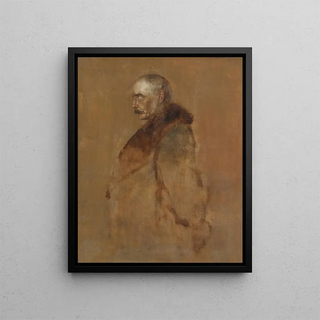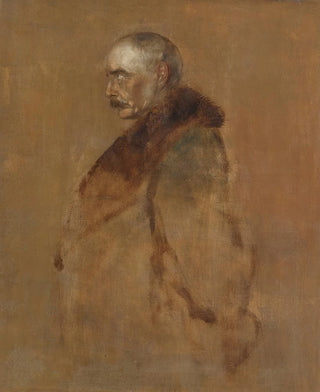Art print | Chlodwig, Prince of Hohenlohe, Prince of Schillings 1819-1901 - Franz von Lenbach


View from behind

Frame (optional)
In the rich and diverse landscape of 19th-century German painting, the work of Franz von Lenbach stands out for its unique approach and keen sense of portraiture. The art print of Chlodwig, prince of Hohenlohe, prince of Schillings 1819-1901 is a perfect example, capturing not only the physical appearance of its subject but also the very essence of his character. Through this piece, Lenbach manages to transcend mere representation to offer a true testament to the personality and status of the prince, while aligning with an artistic tradition that combines realism and grandeur.
Style and uniqueness of the work
Lenbach's style is characterized by an impressive mastery of light and shadow, which gives his portraits a depth and almost sculptural dimension. In this art print, the prince of Hohenlohe is depicted with meticulous attention to detail, from facial features to the drapery of his attire; each element is carefully designed to pay homage to the dignity of his subject. The colors, rich and nuanced, also contribute to this atmosphere of nobility and distinction, reinforcing the idea that the prince is not only a man of power but also an emblematic figure of his era. Lenbach succeeds in establishing a dialogue between the subject and the viewer, inviting the latter to reflect on the history and context surrounding this fascinating personality.
The artist and his influence
Franz von Lenbach, born in 1836 in Karlsruhe, is often regarded as one of the most influential portraitists of his time. His training in Munich and his travels across Europe allowed him to incorporate diverse influences, ranging from Romanticism to Realism. Lenbach was able to capture the spirit of the age while remaining true to his own style, earning him numerous commissions from aristocracy and the bourgeoisie. His work also had a significant impact on his contemporaries and paved the way for other artists seeking to explore the psychology of characters through portraiture. By paying homage to historical figures like the prince of Hohenlohe, Len

Matte finish

View from behind

Frame (optional)
In the rich and diverse landscape of 19th-century German painting, the work of Franz von Lenbach stands out for its unique approach and keen sense of portraiture. The art print of Chlodwig, prince of Hohenlohe, prince of Schillings 1819-1901 is a perfect example, capturing not only the physical appearance of its subject but also the very essence of his character. Through this piece, Lenbach manages to transcend mere representation to offer a true testament to the personality and status of the prince, while aligning with an artistic tradition that combines realism and grandeur.
Style and uniqueness of the work
Lenbach's style is characterized by an impressive mastery of light and shadow, which gives his portraits a depth and almost sculptural dimension. In this art print, the prince of Hohenlohe is depicted with meticulous attention to detail, from facial features to the drapery of his attire; each element is carefully designed to pay homage to the dignity of his subject. The colors, rich and nuanced, also contribute to this atmosphere of nobility and distinction, reinforcing the idea that the prince is not only a man of power but also an emblematic figure of his era. Lenbach succeeds in establishing a dialogue between the subject and the viewer, inviting the latter to reflect on the history and context surrounding this fascinating personality.
The artist and his influence
Franz von Lenbach, born in 1836 in Karlsruhe, is often regarded as one of the most influential portraitists of his time. His training in Munich and his travels across Europe allowed him to incorporate diverse influences, ranging from Romanticism to Realism. Lenbach was able to capture the spirit of the age while remaining true to his own style, earning him numerous commissions from aristocracy and the bourgeoisie. His work also had a significant impact on his contemporaries and paved the way for other artists seeking to explore the psychology of characters through portraiture. By paying homage to historical figures like the prince of Hohenlohe, Len






